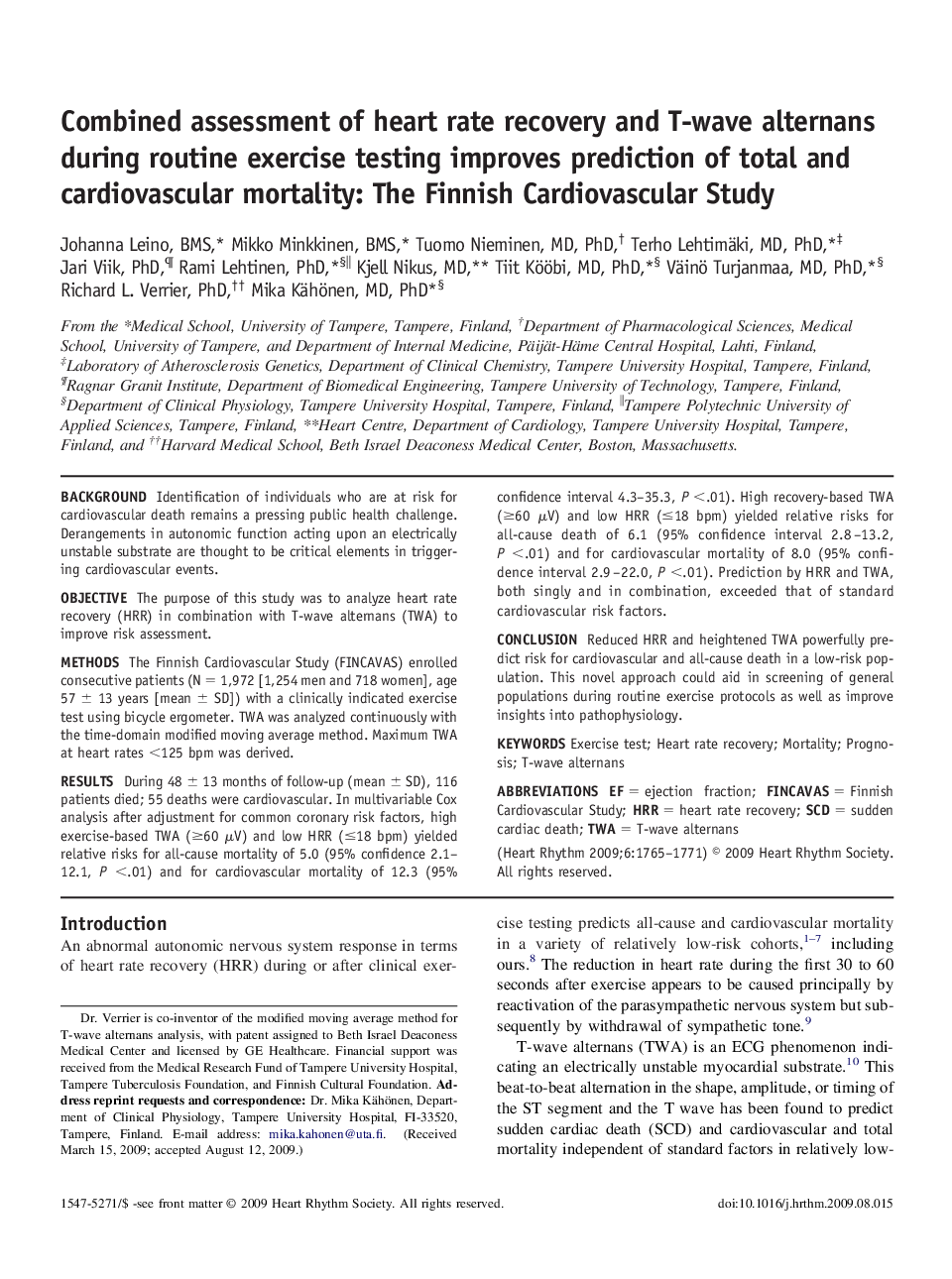| Article ID | Journal | Published Year | Pages | File Type |
|---|---|---|---|---|
| 2923560 | Heart Rhythm | 2009 | 7 Pages |
BackgroundIdentification of individuals who are at risk for cardiovascular death remains a pressing public health challenge. Derangements in autonomic function acting upon an electrically unstable substrate are thought to be critical elements in triggering cardiovascular events.ObjectiveThe purpose of this study was to analyze heart rate recovery (HRR) in combination with T-wave alternans (TWA) to improve risk assessment.MethodsThe Finnish Cardiovascular Study (FINCAVAS) enrolled consecutive patients (N = 1,972 [1,254 men and 718 women], age 57 ± 13 years [mean ± SD]) with a clinically indicated exercise test using bicycle ergometer. TWA was analyzed continuously with the time-domain modified moving average method. Maximum TWA at heart rates <125 bpm was derived.ResultsDuring 48 ± 13 months of follow-up (mean ± SD), 116 patients died; 55 deaths were cardiovascular. In multivariable Cox analysis after adjustment for common coronary risk factors, high exercise-based TWA (≥60 μV) and low HRR (≤18 bpm) yielded relative risks for all-cause mortality of 5.0 (95% confidence 2.1–12.1, P <.01) and for cardiovascular mortality of 12.3 (95% confidence interval 4.3–35.3, P <.01). High recovery-based TWA (≥60 μV) and low HRR (≤18 bpm) yielded relative risks for all-cause death of 6.1 (95% confidence interval 2.8–13.2, P <.01) and for cardiovascular mortality of 8.0 (95% confidence interval 2.9–22.0, P <.01). Prediction by HRR and TWA, both singly and in combination, exceeded that of standard cardiovascular risk factors.ConclusionReduced HRR and heightened TWA powerfully predict risk for cardiovascular and all-cause death in a low-risk population. This novel approach could aid in screening of general populations during routine exercise protocols as well as improve insights into pathophysiology.
